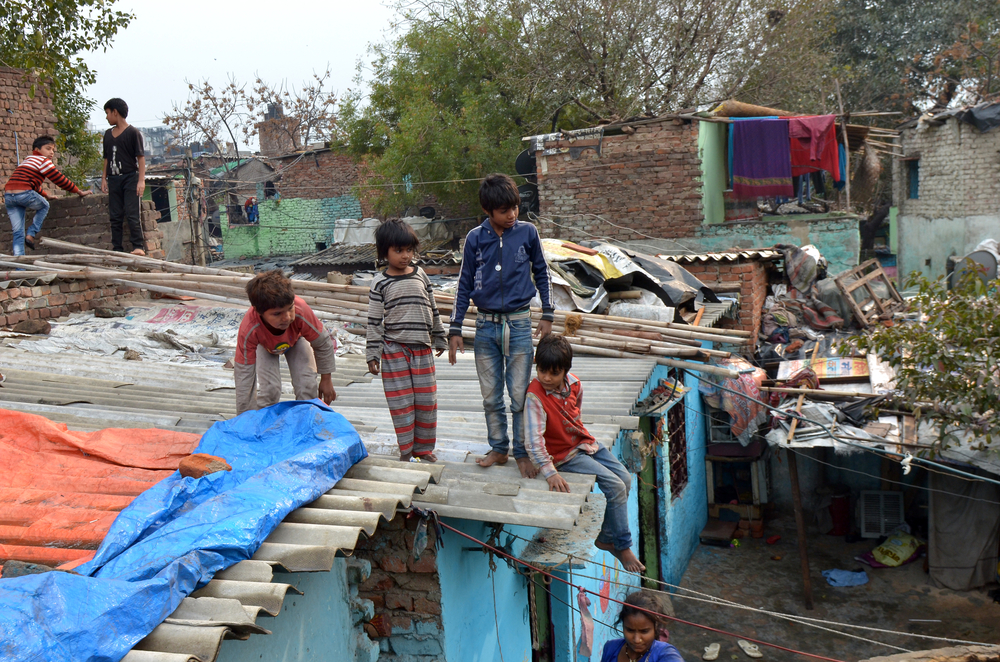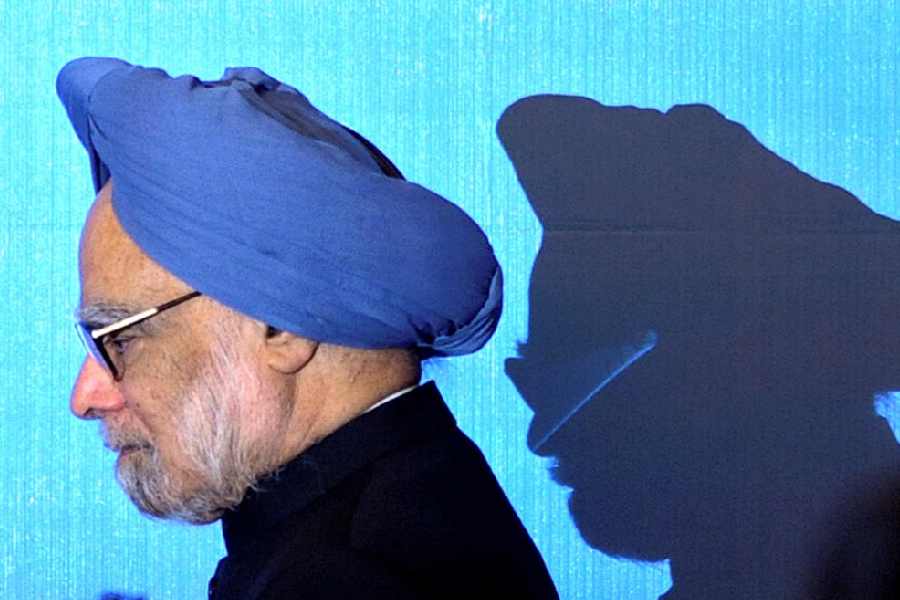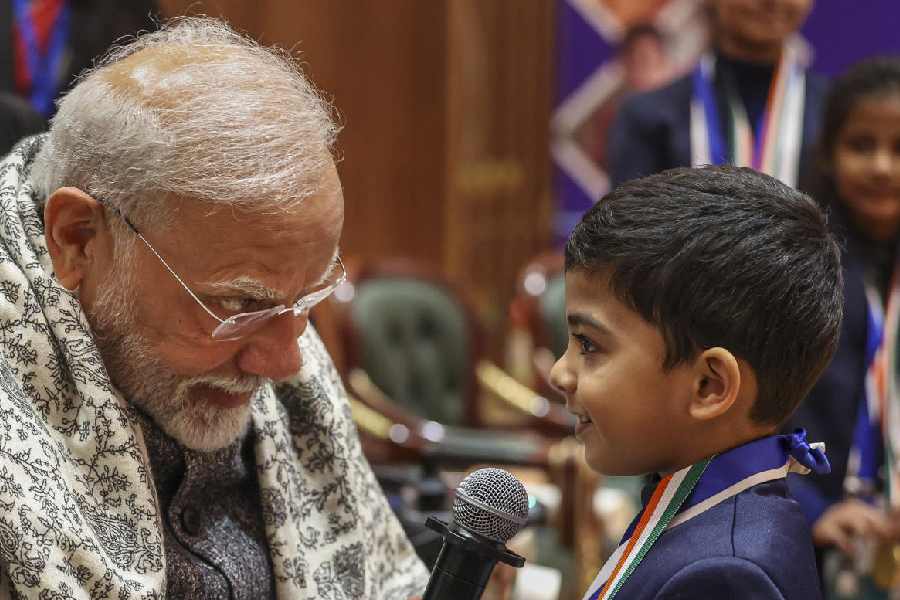Then more children begin to disappear. Adults confer and weep, the police shrug and walk away — occasionally pocketing the only gold necklace a grieving mother possesses — and restrictions are imposed on children’s movements. Within this simmers violence and religious prejudice, as well as salacious gossip about a beautiful teenager who is supposed to have run away. Multiple levels of activity flourish in and around the basti: the downmarket parlour and electronic goods store, the tea shop where Jai works secretly to pay back the money he has stolen from his mother, the red light area by a coaching centre which teaches English, all of them infused with the irrepressible life that can make even a game of cricket with two books highly enjoyable. Caught in a world where every detail can be observed or heard in the jostling of the slum yet innocent of the world’s worst cruelties, the three children are unsure whether their friends have run away to Mumbai, or Manali, perhaps, or have been spirited away by djinns. Anappara captures the shifting, insecure quality of life in the darknesses of the nearby Bhoot Bazar or at the heart of the city through the vitality of the legends that sprout from its secret survivors, tales like talismans that will save your life: the story of Junction-ki-Rani, the woman forever searching for her daughter’s killers who always comes to the rescue of girls in danger, or of Mental, a golden-hearted Fagin descendant who died young but never abandoned his ‘boys’.
The Djinn Patrol cannot avoid recalling the Slumdog Millionaire or Beyond the Beautiful Forevers, neither can it fail to evoke the special interest that the Indian slum holds for privileged, politically correct readers. That should not dim Anappara’s brilliance in sliding not only into the mind of a nine-year-old boy with its vivid, unique lingo — she referred in an interview to the difficulty of creating the language of a child who neither thinks nor speaks in English — but also into the minds of the children about to be lost, whose momentary experiences erupt ominously into Jai’s gallantly hopeful constructions of a reality that is rapidly slipping beyond his understanding. The novel could have been a little shorter, though, and the ending is a little too pat. But it is an unusual coming-of-age story that focuses attention on an frightening reality by the attractiveness of the narration.

Djinn Patrol On The Purple Line by Deepa Anappara Amazon
It is an act of courage to produce fiction out of a daily occurrence that is evil and tragic at the same time. Deepa Anappara has no dearth of courage, which is especially noticeable because she steps into fiction writing with all the right reasons, an impulse that is usually enough to destroy storytelling. Her experience as an award-winning journalist reporting on the effects that deprivation and communal violence have on children forms part of her material, but in this book she focuses on the regular disappearance of children in the country. The scale of this evil seems to have prompted her to write her first novel, Djinn Patrol on the Purple Line, in the hope that the crime will attract attention through fiction. For, in spite of the number of children who keep disappearing, the crime is almost invisible: how long, for example, did it take the police to take note of parents’ complaints in the Nithari case?
But Anappara’s is no docu-fiction. By setting her story in a basti separated by a rubbish-filled ground from “hi-fi” buildings, she demonstrates how invisibility is a condition of the inequalities to which India has grown callused. Her first-person narrator is Jai, nine years old and confident of his abilities as a detective as befits a devoted viewer of Police Patrol on television. His mother works for a demanding “boss-lady” in the hi-fi buildings, as do many of the other women in Jai’s neighbourhood. His father is a construction worker — Jai wonders proudly whether his father’s handprints are hidden within the smart walls of the Purple Line metro station which he sees during a secret trip downtown — while his sister, Runu-didi, is a gifted athlete, whose dream is to run in the interstate competition one day.
Entering the story through Jai, whose assertive bravery wanes a little at night, allows a de-glorified familiarity with the crowded life of an Indian slum full of clashing smells and sparks of alluring taste that may otherwise have seemed a little strained. Jai is smelly, claims his friend, the clever Pari, while Faiz, his other friend, pays special attention to smelling nice. The smog that envelops the slum is as real yet as suggestive as the fog in Bleak House; it can even make faces through the window. Jai’s adventure begins with his decision to go in search of Bahadur, a boy in his school, whose disappearance had remained unnoticed by his alcoholic father till his mother came home from work. Neither Pari nor Faiz see why Jai should be the lead detective, and no reference to Holmes or Byomkesh impresses them, but they do search in earnest, using Bahadur’s photograph and, later, Samosa, a stray that Jai believes can be turned into a sniffer dog.











